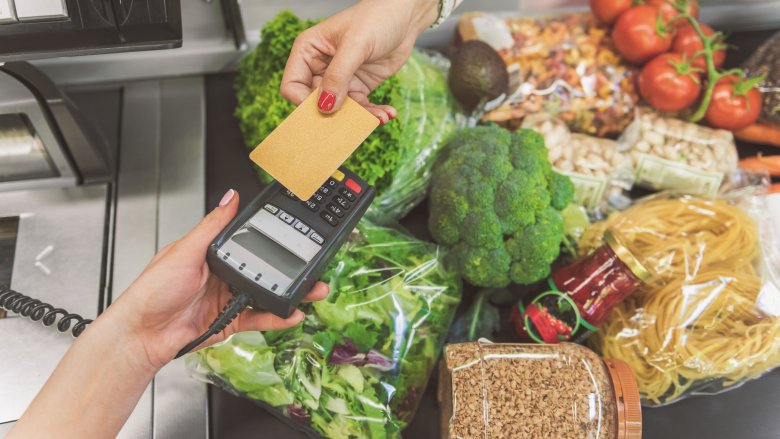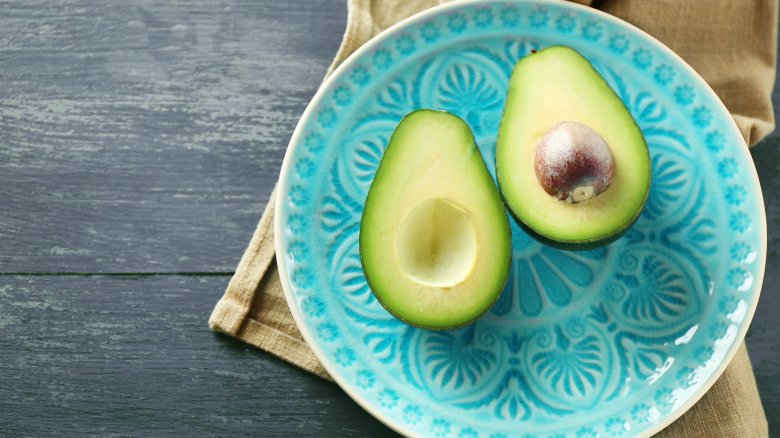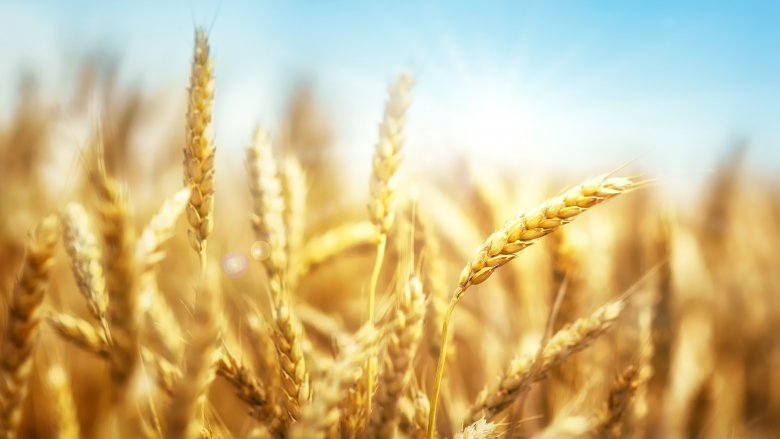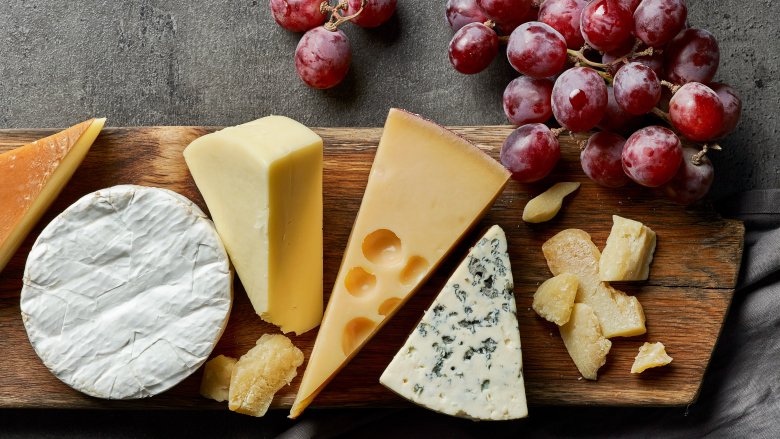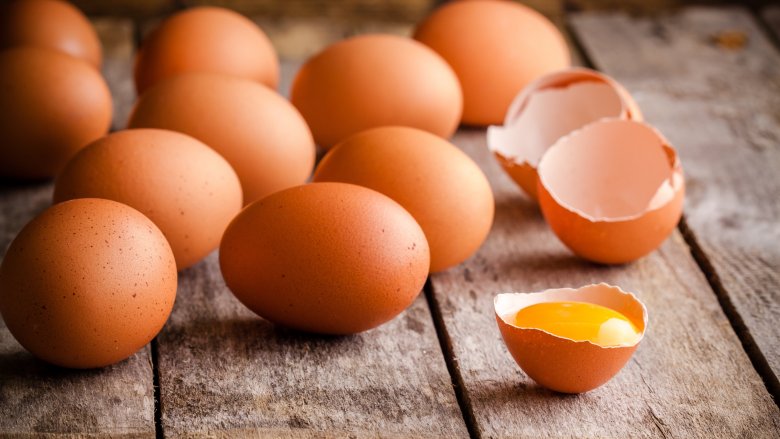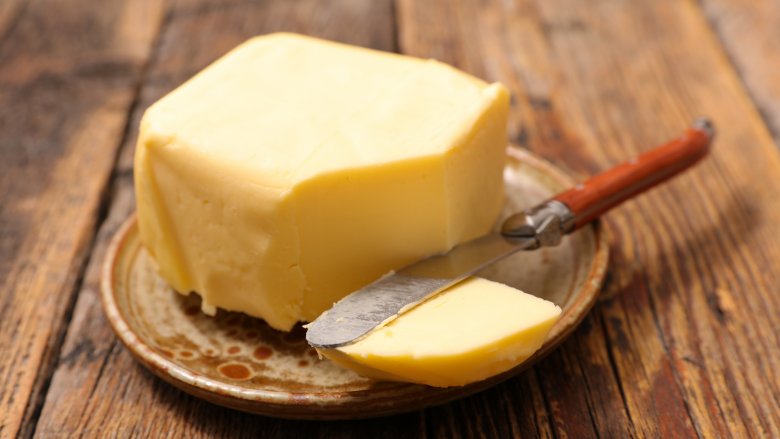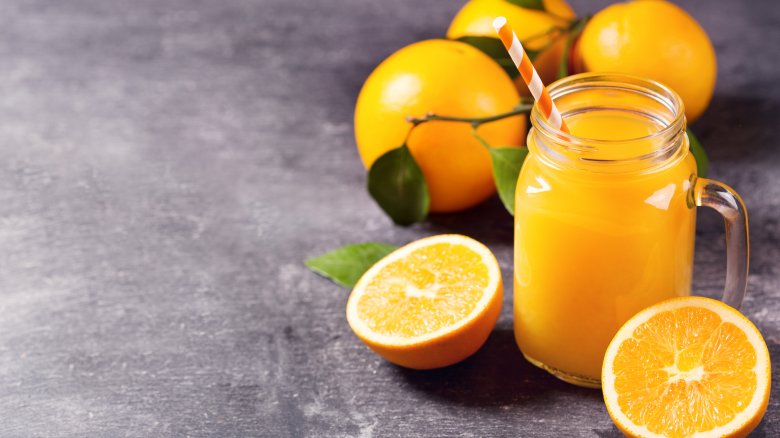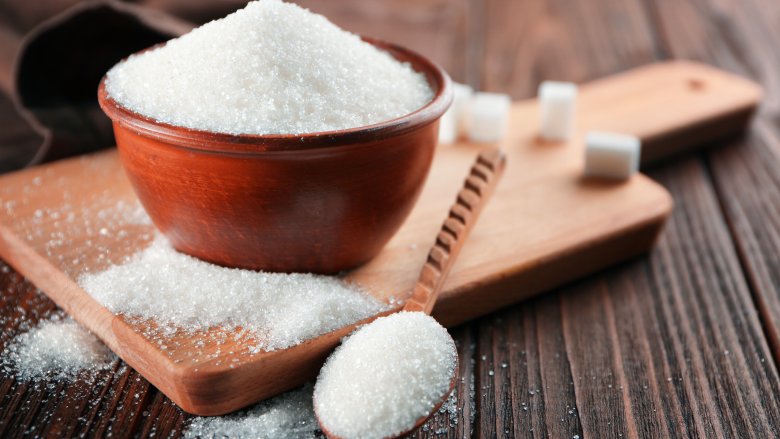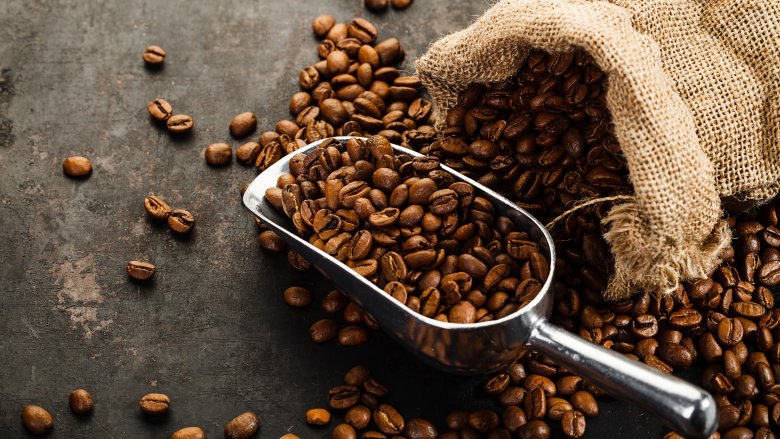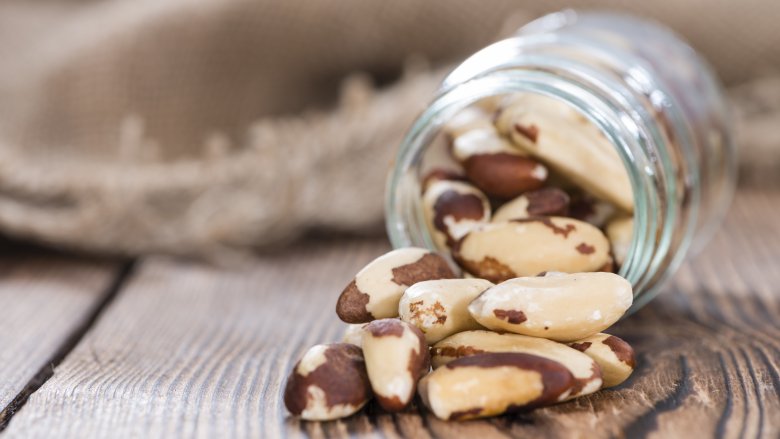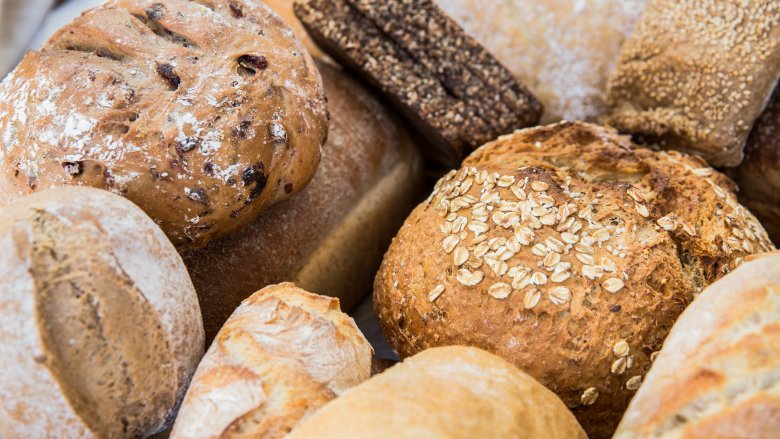The Real Reason The Costs Of These Foods Are Skyrocketing
Have you noticed your grocery bill seems to be getting higher? If so, you're not alone. The Food and Agriculture Organization of the United Nations actually tracks food prices worldwide with the FAO Food Price Index, and you can tell at a glance just what the entire industry looks like. Prices always fluctuate for various reasons, and while 2014 still remains a standout year for high prices, there's no denying some of the foods that are staples in your kitchen have been more than a bit on the expensive side lately. Let's look at why.
Avocado
Avocados have been steadily increasing in popularity, and it's no wonder — they're delicious and great for you. But they're not cheap, and according to CNN Money, avocado prices in September 2017 were the highest they've been since 1999. Prices rose 31 percent since the new year, so why?
There are a few reasons, and according to the California Avocado Commission, part is a 44 percent decrease in the size of the avocado harvest compared to 2016. Weather has something to do with that, but avocado trees go through a two-year cycle. One year, trees will bear a ton of small avocados, while the next year, they'll have a smaller number of larger fruits.
A steadily increasing demand and fluctuating supply means prices are slowly rising, but they'll potentially rise even higher. Many avocados are imported from Mexico, and the uncertain situation surrounding trade between Mexico and the US might mean tariffs and higher costs at the grocery store.
Chicken and chicken wings
In July 2017, The Washington Post reported on a 60 percent price hike restaurants were facing for chicken, and particularly chicken wings. It's a big deal — they're usually one of a restaurant's most profitable items — and that had a huge impact on bottom lines.
Why have wings risen from scrap to expensive? Because of demand, says Erik Oosterwijk, president of Fells Point Wholesale Meats. Just think of the restaurants, pizza places, and bars that count chicken wings among their main menu items, and it's no wonder you're suddenly paying a premium even at the grocery store.
Consumer Affairs says as a rule, the price of all chicken has been on the rise, too, and it's a potentially serious problem. Chicken farmers have reported only about 81 percent of their eggs have been hatching, and it's possible that breeding for top-heavy, more desirable (and more profitable) birds has actually made it harder for them to reproduce. Breeding flocks are getting older, too, and that all means increases in what you're paying at the store.
Beer
If you like to kick back with a cold beer to relax after a long day, you may have noticed the rising cost of your favorite brew. The Telegraph reported the price of hops jumped 60 percent in the first part of 2017, and that's mostly due to an increase in demand. They also say craft beers and breweries are the hardest hit, and there are fears the increasing cost of hops will force some smaller companies out of of business, especially in the UK.
And it could get worse. According to Bloomberg, costs could continue to rise because of President Trump's crusade to keep metal-making jobs in the US a viable industry. That means taxing the imported aluminium that many breweries rely on, leaving the 5,000-odd breweries nationwide no choice but to pass those costs on to the consumer.
Wheat
Think of all the products that use wheat, and you can imagine how far-reaching the impacts of this one are. Now, let's talk about what's going on because there are a few reasons for this price hike.
In April 2017, huge patches of the US were faced with massive, torrential rains and flooding. According to Agrimoney, those weeks of rain were forecasted to be so bad the market was already assuming a major crop loss to the point where entire fields would need to be replanted. At the same time, winter wheat crops were damaged by frosts and freezes. By July, Agrimoney was saying there was plenty of wheat, but prices continued to rise because poor weather conditions and crop failures were still in the forecast. That's not surprising, and it's not just in the US, either. Reuters reported on poor weather conditions for wheat crops in Canada and the Black Sea region as well, so what does that all mean? As long as weather is uncertain, so is the supply. Prices will remain on the high side, and it's going to effect a ton of your favorite foods.
Cheese
Cheese prices go up and down fast, and according to Pizza Today, it all has to do with daily variations in the price of cheeses sold by the Chicago Mercantile Exchange. Suppliers adjust their pricing in line with what goes on at the market, and you'll see the results as much as two weeks later.
There are a lot of factors that go into just how expensive your cheese is, and it doesn't take a lot to make a huge difference in prices. In addition to how in-season certain types of cheese are, there's also the potential for a listeria outbreak to impact pricing, or the opening of a new plant, or even supply issues in securing everything that's needed to make the cheese in the first place.
According to The Caterer, 2017's sharp rise in the price of cheese was thanks largely to an increase in demand for dairy products. There has also been a rise in the demand for a certain type of cheese, and those are the younger ones that haven't been aged as much. All that means still more pressure on dairy farmers, and higher costs make their way to you.
Eggs
No one can possibly argue that taking better care of the animals that form the basis of our food sources could be a bad thing, but according to Buzzfeed News (via CNBC), taking better care of our egg-laying chicken friends is going to impact the industry in a big way. When they did the math in March of 2017, they found about 70 percent of egg-consuming businesses have promised a future of only using eggs from cage-free farms. It's better for the hens, but since about 10 percent of eggs sold are cage-free, farms are going to need to overhaul their entire practices. You'll be shouldering the cost.
It's not just in the US that the price of eggs is rising. According to Food Navigator, things like an outbreak of bird flu in major European egg-producing countries like Italy and Sweden have raised prices there, too. A perception of eggs as a less cruel, more responsible source of protein has led to increased demand, and egg prices in France have jumped as much as 20 percent. Those are no small potatoes — it's the biggest increase since the era of World War II rationing.
Butter (and baked goods)
The Wisconsin Agriculturist is reporting butter consumption is at a record high, and they say it's in part because of the popularity of things like brown butter cocktails and butter coffee. There's also a number of restaurant chains making the switch from butter to margarine, and that's pushing butter prices higher and higher. A strange sort of bottleneck is happening, too. There's plenty of milk, but no place to store it — with extra milk being dumped or fed to animals, the supply of butter isn't going to be going up anytime soon.
It's happening across the world, too. Dairy production is down in Europe, because — according to The Guardian — 2016 was so hard on the dairy industry that it saw many farmers closing up shop. Butter is a staple ingredient, and if you've noticed a rise in butter prices, you've probably noticed a rise in the prices on pastries and baked goods, too. They're all connected, and according to Bakery and Snacks worldwide butter prices are going to be why you start to see the price of those croissants from the bakery department rising, too.
Oranges and orange juice
When hurricane after hurricane descended on Florida and the US Virgin Islands, it was national news. USA Today reported on the aftermath that included the destruction of huge sections of Florida cropland, and since the state provides a large percentage of the country's citrus, it's going to lead to higher prices for things like oranges and orange juice.
Ron Hamel is the executive vice president of the Gulf Citrus Growers Association, and estimated Hurricane Irma ruined about half of the fruit of the region's current crop. Entire groves were flooded, and that's going to amount to prolonged damage impossible to immediately assess. It's not just damage to crops that's going to lead to you paying more, there was also extensive damage done to farm infrastructure that's going to mean replanting crops and needing to recover millions of dollars. Oranges and orange juice might be the first thing you think of, but they say you're also going to see prices rise on other Florida crops like watermelons, tomatoes, green peppers, squash, eggplant, and cucumbers.
Sugar (and sweets)
In June 2017, Business Insider talked to Spangler Candy Co., the last company making candy canes in the US. They weren't happy about the deal the Trump administration had made with Mexico, and said the higher minimums put on the price of Mexican sugar means they're going to be paying more to make your favorite holiday candies. Guess what that could mean for you?
They're not the only ones faced with a huge decision to make. Companies like General Mills, Hershey Co., and Coca-Cola are all needing to decide how much of the cost hike they're going to have to pass along to their customers, so if you start noticing you're paying a premium to satisfy your sweet tooth, that's why.
Fox Business says it's too early to tell just what kind of impact the trade deal is going to have on the consumer, as there are a ton of factors in play. Refill your candy stash now, just in case.
Coffee
In 2016, Fortune reported on just how much coffee prices were being pushed up... and up... and up. Worldwide, coffee consumption has been steadily on the increase, especially in the US. With more and more people starting their day and getting through their afternoons with cups of coffee, the price is steadily on the rise, too. Factor in a poor harvest from coffee plantations in Brazil and stockpiles of coffee that are getting lower and lower, and it's not surprising you may find yourself paying more at the grocery store.
You're definitely paying more at places like Starbucks. On September 6, 2017, Business Insider reported on the return of the ever-popular Pumpkin Spice Latte and an accompanying price hike. They raised the prices on about 10 percent of the menu items with no prior notice in some of their 8,000 locations — and they're not saying just how many places were impacted. A spokesperson said only about 10 percent of the customers would see a rise in their bill, but those who saw it weren't happy.
Brazil nuts (and muesli)
In May 2017, The Independent reported Brazil nut prices had already increased a whopping 61 percent from the start of the year. According to The Guardian, the rising costs of Brazil nuts is also impacting things like muesli and cereal, too.
The problem sounds incredibly scary, and it's a lack of rainfall in the Amazonian forests where remote communities harvest the huge pods off trees that can be up to 1,000 years old. Little rain in the crucial month of November meant fewer pods, and it's happened before. Usually the void is filled with nuts from the previous harvest, but an increased demand for healthy snacks means those nuts are long gone. It's not just your wallet that's suffering, either. Entire communities rely on the Brazil nut harvest for their livelihood, and the consequences of a poor harvest are catastrophic for them.
Bread
Bread is a basic staple of the world's diet, and according to Mother Jones, you can tell a lot about the state of the world by keeping an eye on bread prices. They go up and down a lot, and a rise in bread prices can often be accompanied by rioting and social upheaval.
The price of bread rises with the price of wheat, and they use the example of what happened in Egypt and Africa in 2010 and 2011. Shortages increased the price of a loaf of bread a shocking 83 percent, and according to the president of the World Bank, the world's food system was "one shock away from a full-fledged crisis." Across the globe, a series of catastrophes have lead to an increase in the price of bread, and it's forecasted to keep increasing as much as 90 percent in the next few decades. From droughts in Russia to floods in the US and Canada, the increasing price of bread is an early warning sign that we're struggling to feed our population... and we should probably do something about it.
